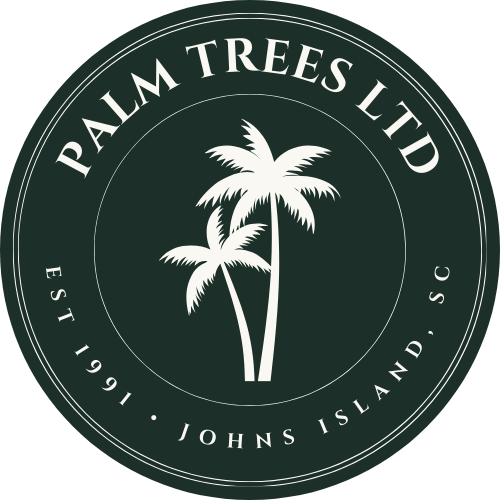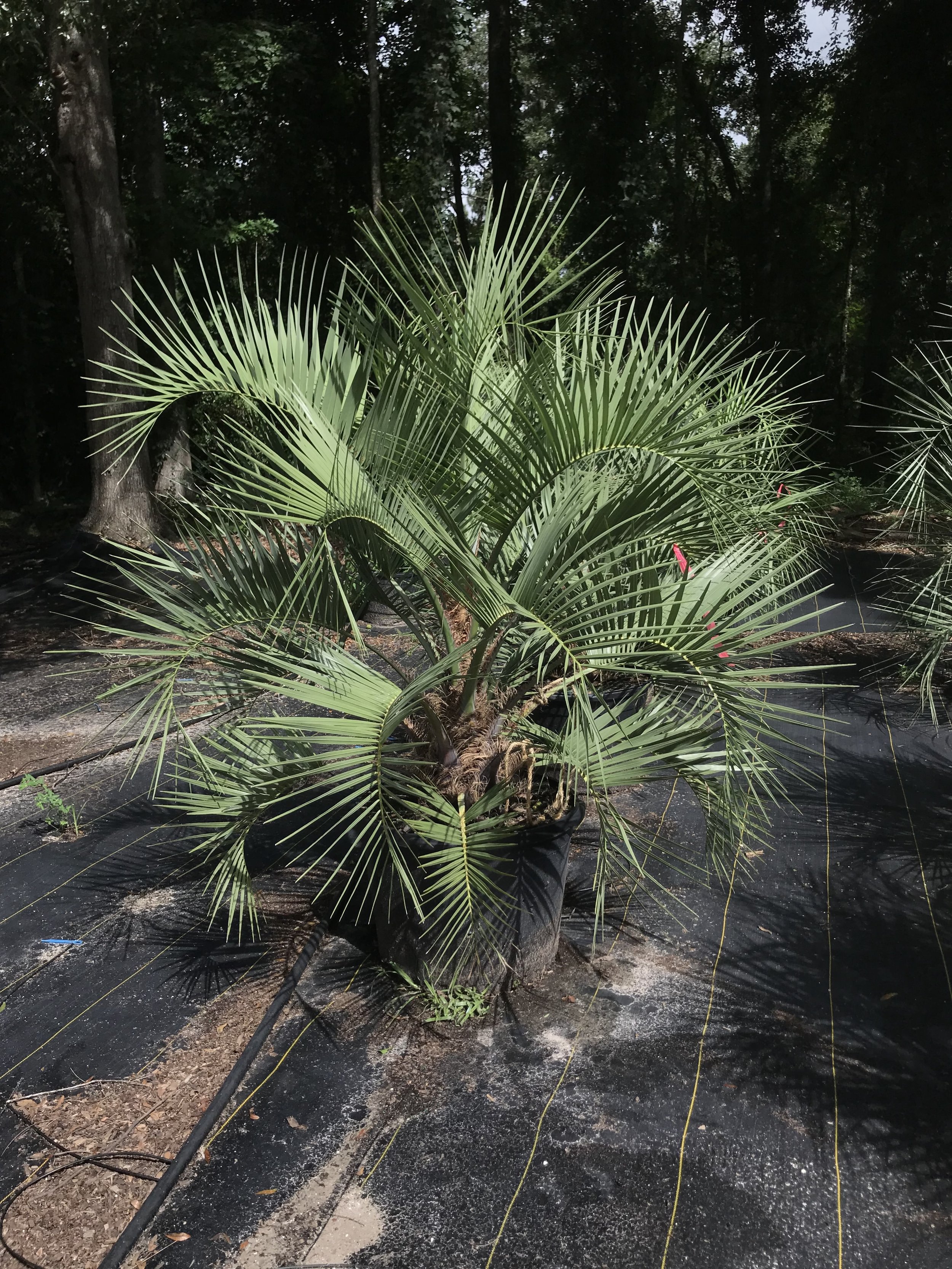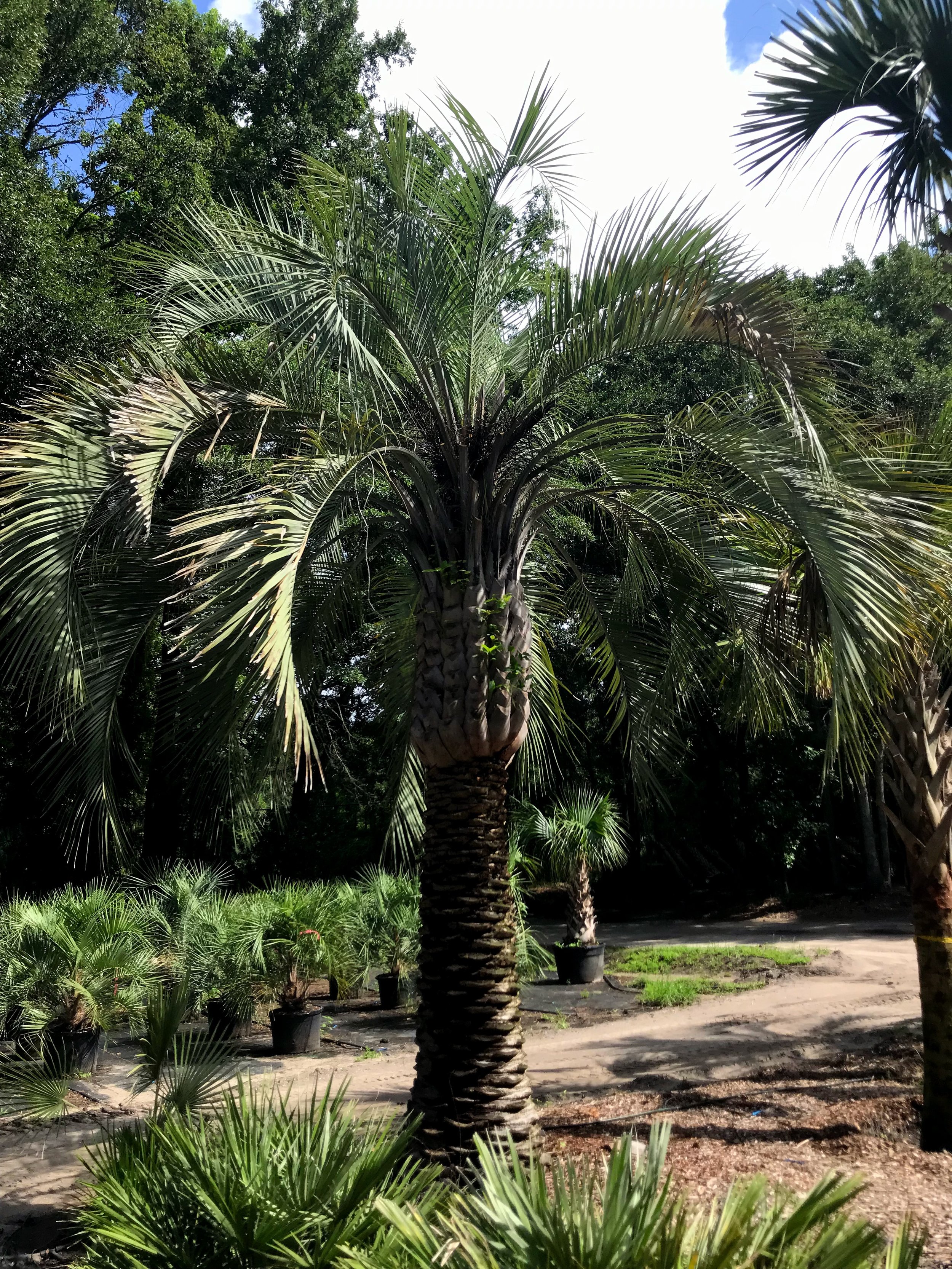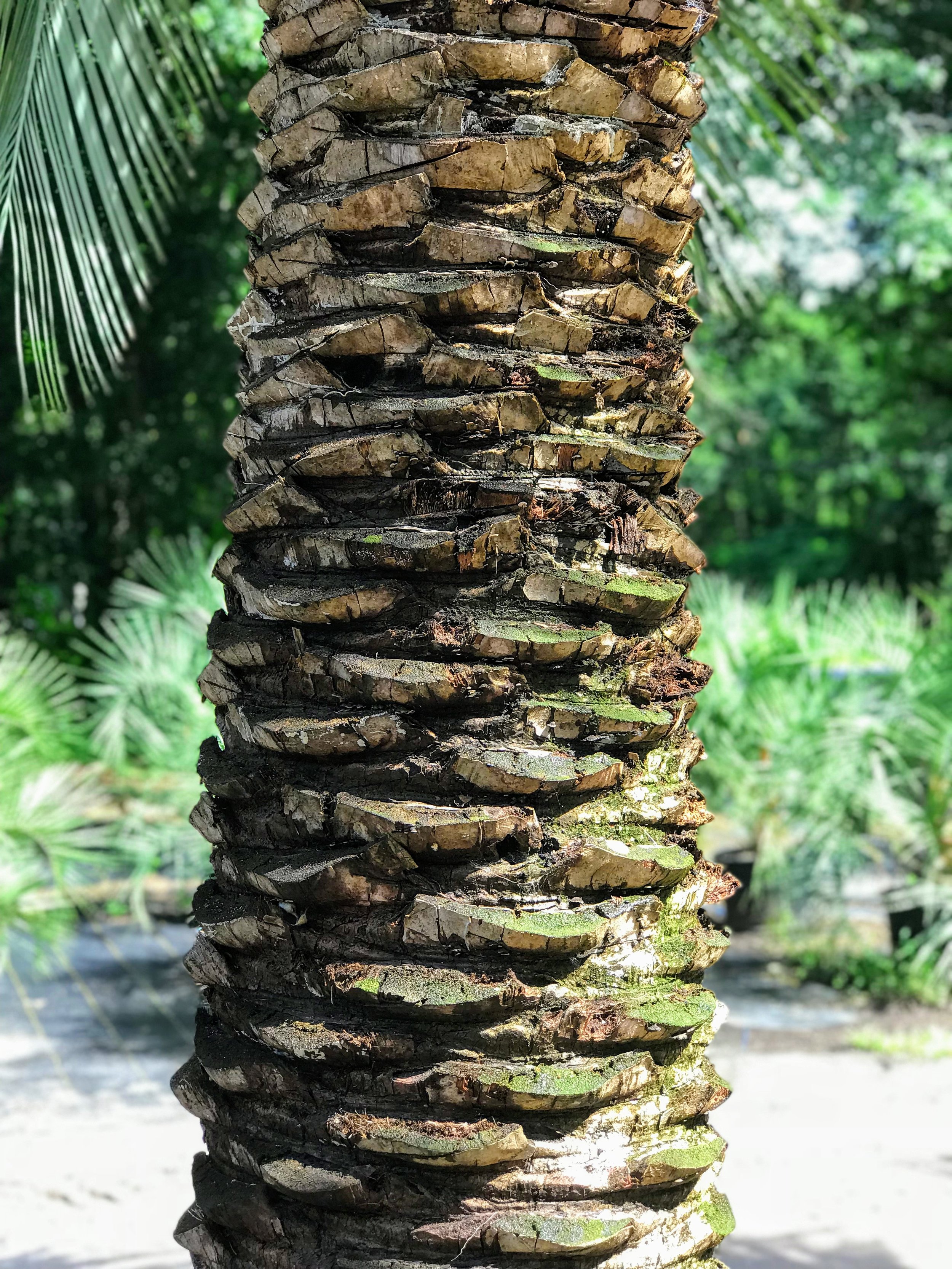Pindo Palm (Butia capitata)
Other Names: Jelly Palm
A feathery palm with a massize trunk up to 2' in diameter, with gray-green to blue-green fronds that can be 6'-8' feet long. The Pindo is one of the only feather palms commonly grown in the Southeast.
Native habitat: Native to Uruguay and Southern Brazil, in areas that have warm summers and occasional frost in winter.
Size: Can reach 30 feet, but 10-20 feet is more common, Growth rate is slow to moderate.
Cold hardiness: Cold hardy throughout Zone 8, although it may be injured in cold winters in Zone 8a. These trees are not quite as hardy as the Palmetto Palm. In Zone 7 and North, winter protection is recommended below 15 degrees. During cold spells, some Pindo palm owners tie up the soft, flexible leaves and cover them with burlap or some other material to prevent cold damage to the leaves.
Culture: Best growth is in full sun and well-drained soil. Reasonably drought hardy once established.
Landscape use: This is the most commonly cultivated exotic palm in the Southeast, and in Zone 8 it is used in many landscape situations. Because of its showy appearance, its most natural use is as a single specimen. Tolerates salt spray.





